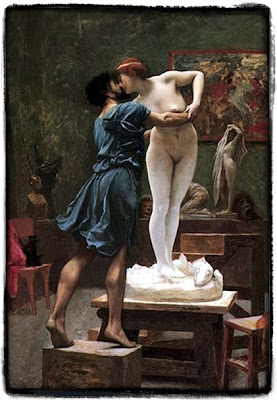Let me start explaining this magical Pygmalion Effect through my very own quirky yet easy to understand way.
The idea is :
The idea is :
A PIG MAY become a LION if provided with continual positive expectation reinforcement. The words 'pig' , 'may', and 'lion' are keywords which can be used to understand 'The Pygmalion Effect' effectively.
INTRODUCTION
The Pygmalion effect, or Rosenthal effect, is the phenomenon in which the greater the expectation placed upon people, the better they perform.The effect is named after Pygmalion, a play by George Bernard Shaw.
The corollary of the Pygmalion effect is the golem effect, in which low expectations lead to a decrease in performance. The Pygmalion effect and the golem effect are forms of self-fulfilling prophecy, and, in this respect, people will internalize their positive labels, and those with positive labels succeed accordingly. Within sociology, the effect is often cited with regard to education and social class.
BACKGROUND
Pygmalion is a play by George Bernard Shaw, which was staged in 1912 and it was named after a Greek mythological character.
In ancient Greek mythology, Pygmalion fell in love with one of his sculptures that came to life and was a popular subject for Victorian era English playwrights
Rosenthal–Jacobson study
Robert Rosenthal and Lenore Jacobson (1968) report and discuss the Pygmalion effect in the classroom at length. In their study, they showed that if teachers were led to expect enhanced performance from some children, then the children did indeed show that enhancement.
The purpose of the experiment was to support the hypothesis that reality can be influenced by the expectations of others. This influence can be beneficial as well as detrimental depending on which label an individual is assigned. The observer-expectancy effect, which involves an experimenter's unconsciously biased expectations, is tested in real life situations. Rosenthal posited that biased expectancy can essentially affect reality and create self-fulfilling prophecies as a result.
All students in a single California elementary school were given a disguised IQ test at the beginning of the study. These scores were not disclosed to teachers. Teachers were told that some of their students (about 20% of the school chosen at random) could be expected to be "spurters" that year, doing better than expected in comparison to their classmates. The spurters' names were made known to the teachers. At the end of the study all students were again tested with the same IQ-test used at the beginning of the study. All six grades in both experimental and control groups showed a mean gain in IQ from pretest to post test. However, First and Second Graders showed statistically significant gains favoring the experimental group of "spurters." This led to the conclusion that teacher expectations, particularly for the youngest children, can influence student achievement.
In this experiment, Rosenthal predicted that elementary school teachers may subconsciously behave in ways that facilitate and encourage the students' success. The prior research that motivated this study was done in 1911 by psychologists regarding the case of Clever Hans, a horse that gained notoriety because it was supposed to be able to read, spell, and solve math problems by using its hoof to answer. Many skeptics suggested that questioners and observers were unintentionally signaling Clever Hans. For instance, whenever Clever Hans was asked a question the observers' demeanor usually elicited a certain behavior from the subject that in turn confirmed their expectations. For example, Clever Hans would be given a math problem to solve, and the audience would get very tense the closer he tapped his foot to the right number, thus giving Hans the clue he needed to tap the correct number of times.











